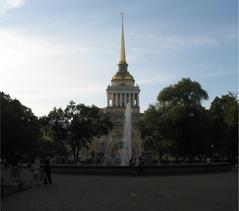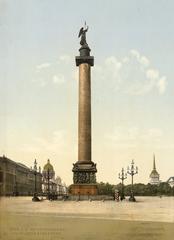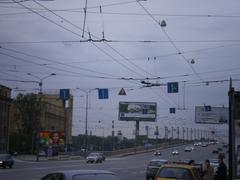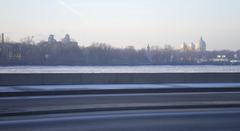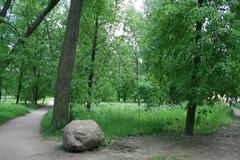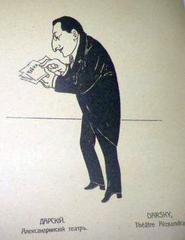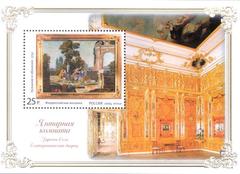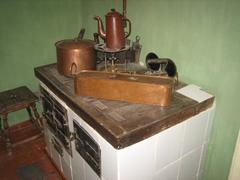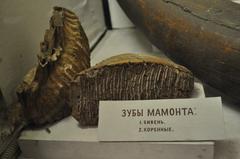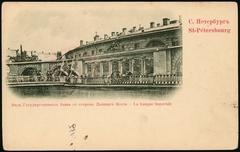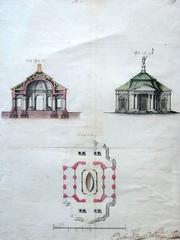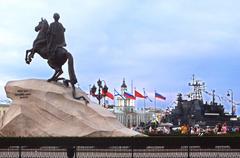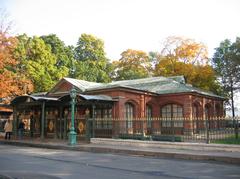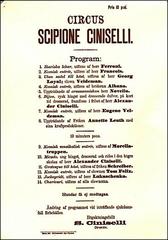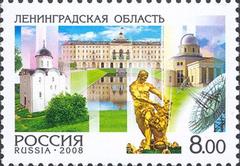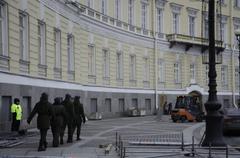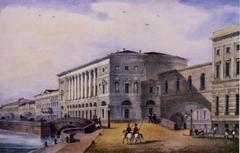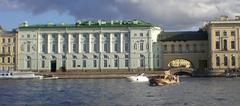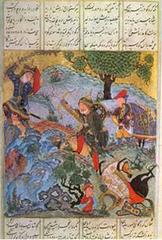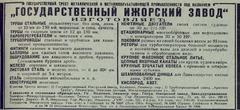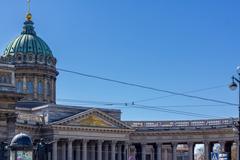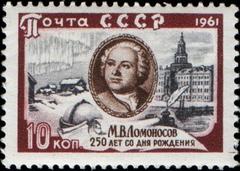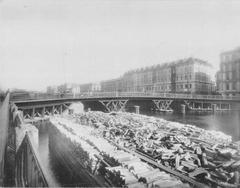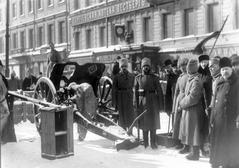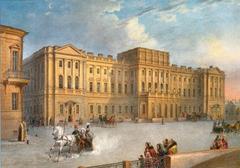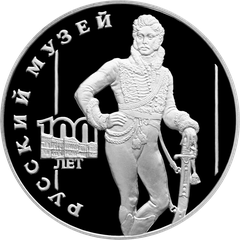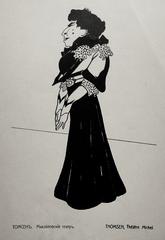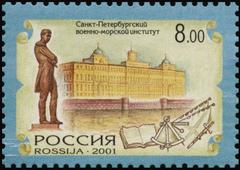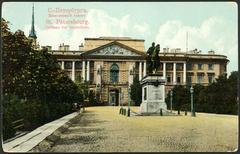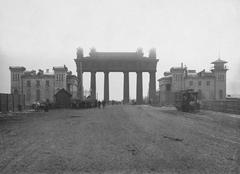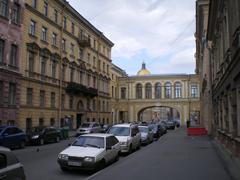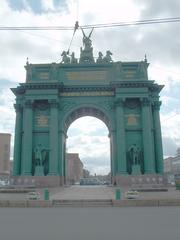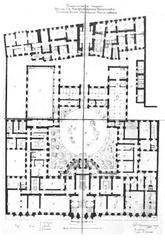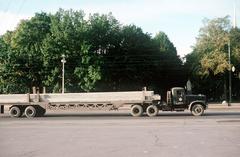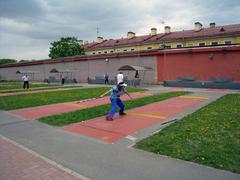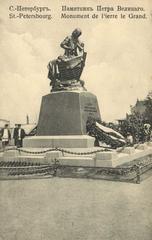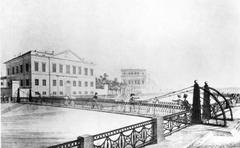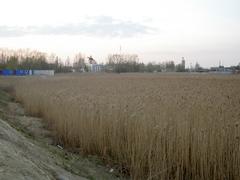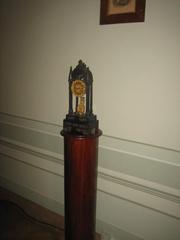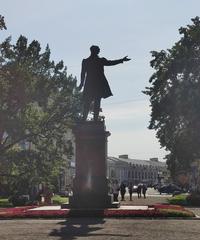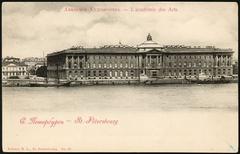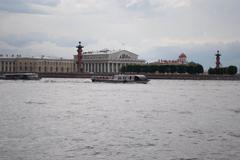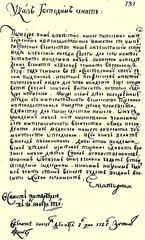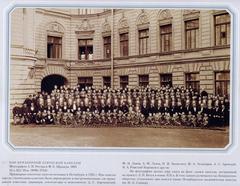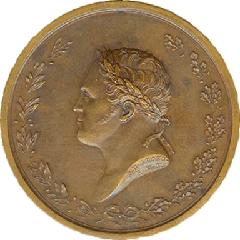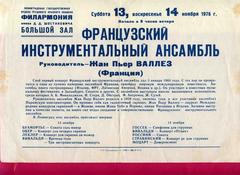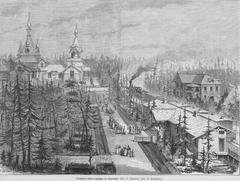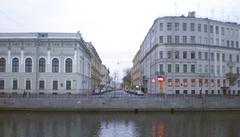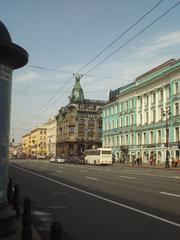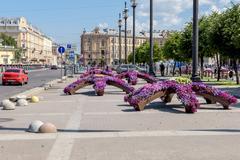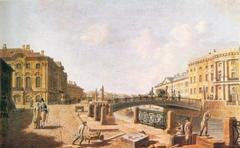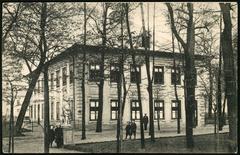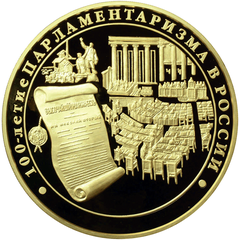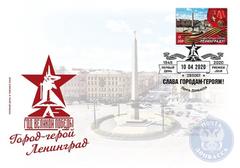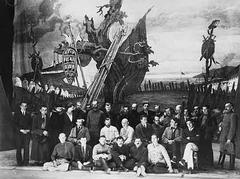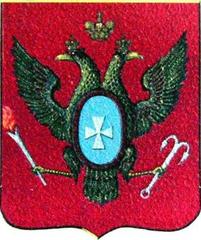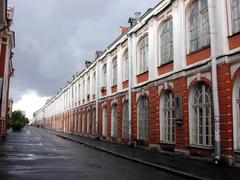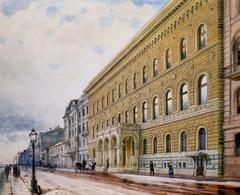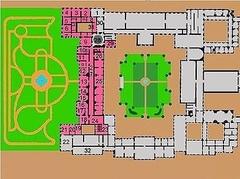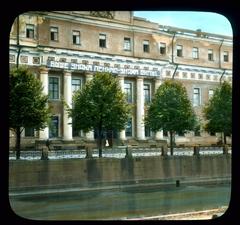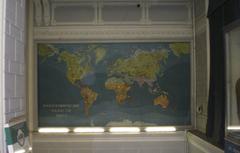
Emperor Railway Station Pushkin: Visiting Hours, Tickets, and Comprehensive Guide
Date: 04/07/2025
Introduction
The Emperor Railway Station in Pushkin (formerly Tsarskoye Selo), just south of Saint Petersburg, stands as a unique monument to Russia’s imperial heritage and the evolution of its railway system. Originally built as a private terminal for the Romanov dynasty and their court, the station is both an architectural gem and a symbol of the country’s transition from autocracy to modernity. Today, it is under restoration, with plans to reopen as a museum and cultural venue, offering visitors a chance to explore its rich history, striking architecture, and connection to the imperial legacy of Tsarskoye Selo (Wikipedia; Advantour).
This guide covers the station’s origins, architectural highlights, restoration progress, visitor information, accessibility, and practical travel tips, ensuring that history enthusiasts and travelers alike can fully appreciate this remarkable site.
Table of Contents
- Introduction
- Historical Background
- Architecture and Restoration
- Role in Imperial and Soviet History
- Visiting Hours and Ticket Information
- How to Get There & Nearby Attractions
- Accessibility and Visitor Tips
- Visuals and Media Resources
- Frequently Asked Questions (FAQ)
- Conclusion & Call to Action
- References
Historical Background
Imperial Origins
Pushkin Town (formerly Tsarskoye Selo) grew into an imperial enclave after Peter the Great gifted land to Catherine I in 1710. Over the centuries, it developed into a complex of palaces, parks, and institutions central to the Romanov dynasty (Wikipedia). The Emperor Railway Station, opened in 1837 as part of Russia’s first railway—the Tsarskoye Selo line—was designed to connect Saint Petersburg with the Tsar’s summer residence. This railway was a milestone in Russia’s embrace of technological innovation and modernization (Wikipedia).
Symbol of Progress and Privilege
The Emperor Railway Station was constructed as the exclusive terminus for the imperial family. Its private branch line and ceremonial architecture reflected the exclusivity and grandeur of the autocracy. The station’s proximity to the Alexander Palace and Catherine Palace underscored its importance as a royal gateway (Tsar Nicholas II; Advantour).
Architecture and Restoration
Design and Features
The original Emperor’s Pavilion combined ancient Russian motifs with modern construction. The interiors featured heavy stone vaults and monumental paintings, notably by artist M. I. Kurilko, echoing the ambiance of Tsar Alexei Mikhailovich’s palace (Tsar Nicholas II). The facades were adorned with imperial eagles and intricate ceiling designs, marrying ceremonial needs with the technological aspirations of the empire (International Steam).
The current station, reconstructed between 1946 and 1950 by architect E. A. Levinson, blends Soviet-era classicism with monumental style, preserving the building’s grandeur and historical echoes (life-globe.com).
Restoration Efforts
After decades of neglect and wartime damage, restoration began in earnest in 2023 under the guidance of the Tsarskoye Selo Station Foundation (Tsar Nicholas II). The project includes:
- Full restoration of the facade and roof to their historical appearance;
- Reconstruction of the 200-meter platform and canopy;
- Meticulous revival of interiors, including wall and ceiling paintings, stucco, and historic stoves;
- Landscaping to reintegrate the pavilion into Tsarskoye Selo Park (Tsar Nicholas II).
Original decorative elements, including Kurilko’s monumental artwork, are being preserved wherever possible.
Role in Imperial and Soviet History
Imperial Days
The station served as the departure and arrival point for the Romanov family and their court, facilitating travel between Saint Petersburg, Tsarskoye Selo, and Gatchina. It was a site of countless ceremonial events and daily routines of the Russian monarchy (Wikipedia). One of its most poignant moments occurred in August 1917, when Tsar Nicholas II and his family departed for exile following the February Revolution (Tsar Nicholas II).
Soviet Era and Modern Transformation
After the revolution, imperial insignia were removed and the station was renamed. It became a public transport hub, supporting troop and civilian movements, especially during World War II, when it suffered significant damage (Express to Russia). Postwar reconstruction prioritized restoring operations, with later preservation efforts focusing on its cultural significance.
Visiting Hours and Ticket Information
Current Status (2025)
- Restoration Ongoing: As of July 2025, the Emperor Railway Station remains closed to the public, with anticipated reopening in late 2025 or early 2026 (Tsar Nicholas II).
- Visiting Hours (upon reopening): Expected to follow standard museum hours, likely 10:00 AM – 6:00 PM, with closures on certain holidays.
- Tickets: Details will be announced closer to reopening. Expect options for general admission, guided tours, and group rates, with advance online booking.
- Guided Tours: Expert-led tours will provide in-depth historical and architectural context.
- Photography: Will be permitted in designated areas post-restoration.
How to Get There & Nearby Attractions
- Location: Akademicheskii Prospect, Pushkin, approximately 25 km south of central Saint Petersburg.
- Access: Suburban trains (elektrichka) run from Vitebsky Railway Station in Saint Petersburg to Pushkin Station. From there, local buses or taxis reach the park and station area (life-globe.com).
- Nearby Sites: Catherine Palace, Alexander Palace, the Pushkin Lyceum Museum, and the landscaped parks of Tsarskoye Selo are all within walking distance. These sites form a UNESCO World Heritage ensemble.
Accessibility and Visitor Tips
- Accessibility: The restored station will feature ramps, elevators, and adapted restrooms for visitors with disabilities.
- Visitor Tips:
- Wear comfortable shoes for walking between attractions.
- Check the official museum or tourism websites for up-to-date schedules and ticketing.
- Guided tours are highly recommended for a deeper understanding of the site’s context.
- Spring through early autumn offers the best weather for exploring the area.
- Consider pairing your visit with tours of the Catherine and Alexander Palaces for a full-day excursion.
Visuals and Media Resources
- Official Updates: Progress photos, artist renderings, and restoration videos are available on the Tsarskoye Selo Station Foundation site (Tsar Nicholas II).
- Virtual Tours: Plans for interactive maps and virtual tours are underway to enhance pre-visit planning.
- Photography: The restored interiors and exteriors will offer excellent photographic opportunities, especially for architecture and history enthusiasts.
Alt text for images:
- “Emperor Railway Station facade under restoration, Pushkin Town”
- “Restored interior ceiling paintings of Emperor Railway Station”
- “Reconstructed platform canopy of the Imperial Railway Pavilion”
Frequently Asked Questions (FAQ)
Q: When will Emperor Railway Station reopen?
A: Restoration is scheduled for completion in late 2025 or early 2026. Monitor official channels for updates.
Q: How do I purchase tickets?
A: Online and on-site ticket sales are anticipated post-reopening, with options for general admission and guided tours.
Q: Will the site be accessible for disabled visitors?
A: Yes, accessibility features are part of the restoration, including ramps and elevators.
Q: Can I book a guided tour?
A: Guided tours by expert historians and restoration specialists will be available after reopening.
Q: What are the best nearby attractions?
A: Catherine Palace, Alexander Palace, the Lyceum Museum, and Tsarskoye Selo parks are all highly recommended.
Conclusion & Call to Action
The Emperor Railway Station in Pushkin is a living monument to Russia’s imperial, revolutionary, and Soviet history. Its ongoing restoration promises to return it to its former grandeur as both a museum and cultural venue, offering a rare glimpse into the intersection of technology, architecture, and autocratic tradition. Visitors are encouraged to stay updated on opening dates and ticket information through official heritage websites and to plan a comprehensive trip that includes the surrounding palaces and parks of Tsarskoye Selo.
For exclusive audio guides, up-to-date visitor information, and deeper stories about Russian heritage, download the Audiala app and follow us on social media. Begin your exploration of Pushkin Town’s imperial legacy and be among the first to experience the restored Emperor Railway Station.
References and Further Reading
- Imperatorsky Pavilyon Railway Station – Wikipedia
- Tsarskoye Selo and Pushkin Town Overview – Advantour
- Restoration Updates – Tsar Nicholas II
- Pushkin Town Sights – Life Globe
- International Steam – Russia
- Pushkin Travel Guide – Saint-Petersburg.com
- History of Rail Transport in Russia – Wikipedia
- Pushkin Town – Wikipedia
- Express to Russia – Tsarskoye Selo
- Imperial Train – Tsar Nicholas II







